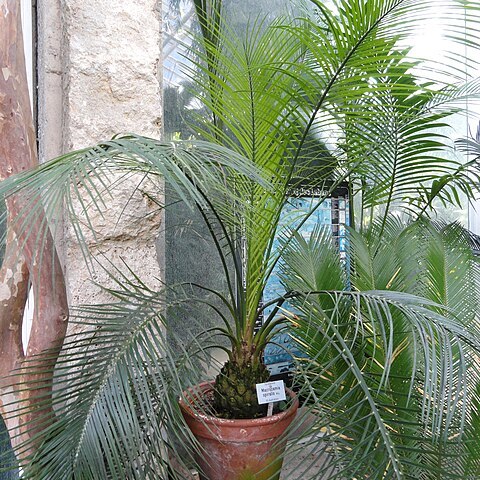Plants acaulescent; stem 8-20 cm diam.; 2-12 leaves in crown. Leaves 35-100 cm long, moderately keeled, with 45-120 pinnae, grey-green, semi-glossy; petiole 15-40 cm long, 4-8 mm wide at lowest pinna; rachis not to moderately spirally twisted. Basal pinnae not reducing to spines. Median pinnae simple, 12-20 cm long, 5-9 mm wide, strongly discolorous; margins flat or slightly recurved; apex entire, not spinescent. Pollen cones fusiform, 15-20 cm long, 5-6 cm diam.; microsporophyll lamina 20-30 mm long, 15-22 mm wide; apical spine 0-15 mm long. Seed cones ovoid, 12-20 cm long, 6-9 cm diam.; megasporophyll with an expanded, peltate apex 35-55 mm wide and 15-25 mm long; apical spine 2-30 mm long. Seeds ovoid, 25-30 mm long, 20-25 mm wide; sarcotesta red.


